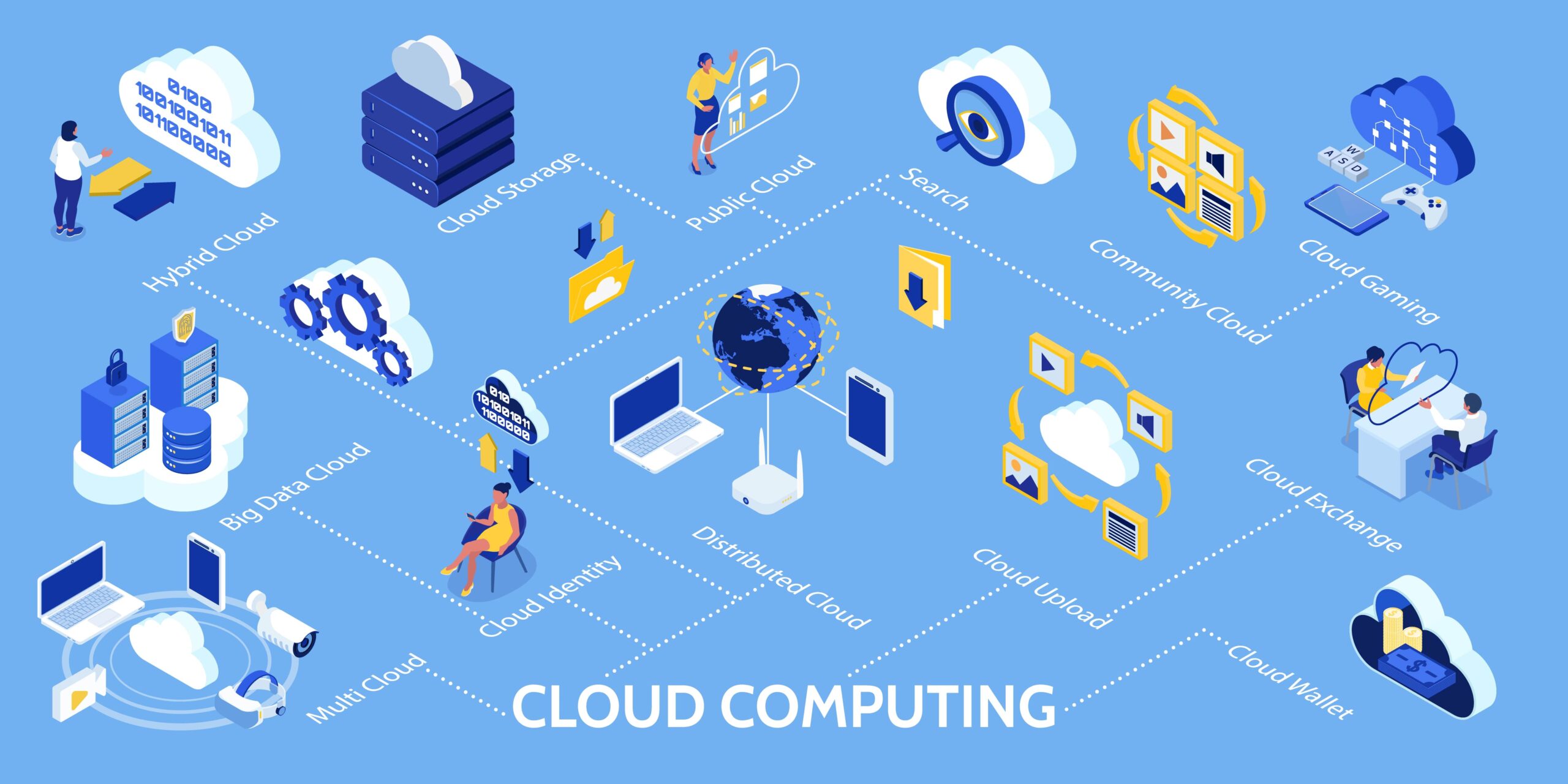In the ever-evolving landscape of technology and business operations, cloud migration has become not just a trend but a strategic imperative for organizations across industries. The transition to cloud computing offers a myriad of benefits that empower businesses to streamline operations, enhance scalability, and improve overall efficiency. As we step into 2024, the momentum towards cloud adoption continues to accelerate, driven by several compelling reasons that underscore its significance in shaping the future of business IT infrastructure.
1. Scalability and Flexibility
One of the foremost reasons organizations are gravitating towards cloud migration is the unparalleled scalability and flexibility it offers. Unlike traditional on-premises infrastructure, cloud platforms allow businesses to rapidly scale resources up or down based on demand. This elasticity is particularly valuable for seasonal businesses, startups experiencing rapid growth, or enterprises with fluctuating workloads. By leveraging cloud services, companies can efficiently allocate resources, optimize performance, and adapt swiftly to changing market conditions without the constraints of physical hardware limitations.
2. Cost Efficiency and ROI
Cost optimization remains a driving force behind cloud migration decisions. Cloud computing eliminates the need for upfront investments in hardware, software licenses, and maintenance, shifting the financial model to a pay-as-you-go structure. This pay-per-use pricing model allows organizations to align IT expenditures with actual consumption, thereby optimizing operational costs and improving overall return on investment (ROI). Additionally, cloud services reduce the burden of managing physical infrastructure, freeing up capital that can be reinvested into core business activities or innovation initiatives.
3. Enhanced Security and Compliance
Contrary to early concerns about security in the cloud, modern cloud providers have invested heavily in robust security measures and compliance certifications. Leading cloud platforms adhere to stringent security protocols, including data encryption, identity and access management (IAM), and continuous monitoring to safeguard sensitive information. For industries with stringent regulatory requirements, such as healthcare (HIPAA), finance (PCI DSS), or government (FedRAMP), leveraging certified cloud providers ensures adherence to compliance standards without compromising data integrity or confidentiality.
4. Improved Collaboration and Productivity
Cloud migration fosters a collaborative work environment by enabling seamless access to data and applications from any location or device with internet connectivity. This accessibility empowers teams to collaborate in real-time, share resources, and leverage productivity-enhancing tools such as cloud-based document management, project management, and communication platforms. Remote work trends amplified by global events underscore the importance of cloud-enabled flexibility, allowing employees to remain productive and connected regardless of their physical location.
5. Agility and Innovation
In today’s competitive landscape, agility and innovation are critical differentiators for business success. Cloud computing accelerates time-to-market for new products and services by providing developers with on-demand access to scalable infrastructure and cutting-edge tools. Moreover, cloud-native architectures enable continuous integration and delivery (CI/CD), DevOps practices, and experimentation with emerging technologies such as artificial intelligence (AI), machine learning (ML), and Internet of Things (IoT). By embracing cloud-native development frameworks, organizations can innovate faster, iterate more effectively, and stay ahead of industry disruptions.
6. Disaster Recovery and Business Continuity
Maintaining robust disaster recovery (DR) and business continuity (BC) strategies is paramount for organizations seeking to mitigate operational risks and ensure resilience against unforeseen disruptions. Cloud platforms offer built-in redundancy, automated backup solutions, and geographically distributed data centers that enhance DR capabilities without the complexity and cost of traditional backup systems. By leveraging cloud-based DRaaS (Disaster Recovery as a Service), businesses can minimize downtime, recover data swiftly, and maintain critical operations during crises or unplanned outages.
7. Environmental Sustainability
As environmental sustainability becomes a key focus area for global businesses, cloud migration presents opportunities to reduce carbon footprints and adopt greener IT practices. Cloud providers invest in energy-efficient infrastructure, optimize resource utilization, and offer renewable energy options to power data centers. By consolidating workloads on shared cloud servers, organizations can achieve significant reductions in energy consumption, hardware waste, and overall environmental impact compared to maintaining on-premises data centers.
8. Support for Remote Workforces
The paradigm shift towards remote work has underscored the importance of robust IT infrastructure capable of supporting dispersed teams and remote operations. Cloud computing empowers organizations to deliver secure access to corporate resources, virtual desktops, and collaboration tools that facilitate seamless remote work experiences. Cloud-based solutions for video conferencing, virtual private networks (VPNs), and unified communications ensure that remote employees remain productive, connected, and engaged, regardless of geographical boundaries or time zones.
Conclusion
In conclusion, the decision to migrate to the cloud in 2024 is driven by a convergence of strategic imperatives, technological advancements, and evolving business priorities. From scalability and cost efficiency to enhanced security and innovation agility, cloud computing offers a transformative framework that empowers organizations to thrive in a digital-first economy. By embracing cloud migration, businesses can unlock new growth opportunities, optimize operational efficiencies, and future-proof their IT infrastructure against emerging challenges. As the adoption of cloud technologies continues to accelerate, proactive planning and strategic alignment will be crucial in harnessing the full potential of cloud computing to drive sustainable business success in the years ahead.
This article outlines the top reasons organizations should consider cloud migration in 2024, emphasizing the transformative benefits that cloud computing offers across scalability, cost efficiency, security, collaboration, agility, disaster recovery, sustainability, and remote workforce support. Each section provides detailed insights into how cloud adoption can empower businesses to innovate, optimize operations, and achieve strategic goals in a rapidly evolving digital landscape.



